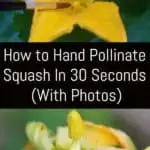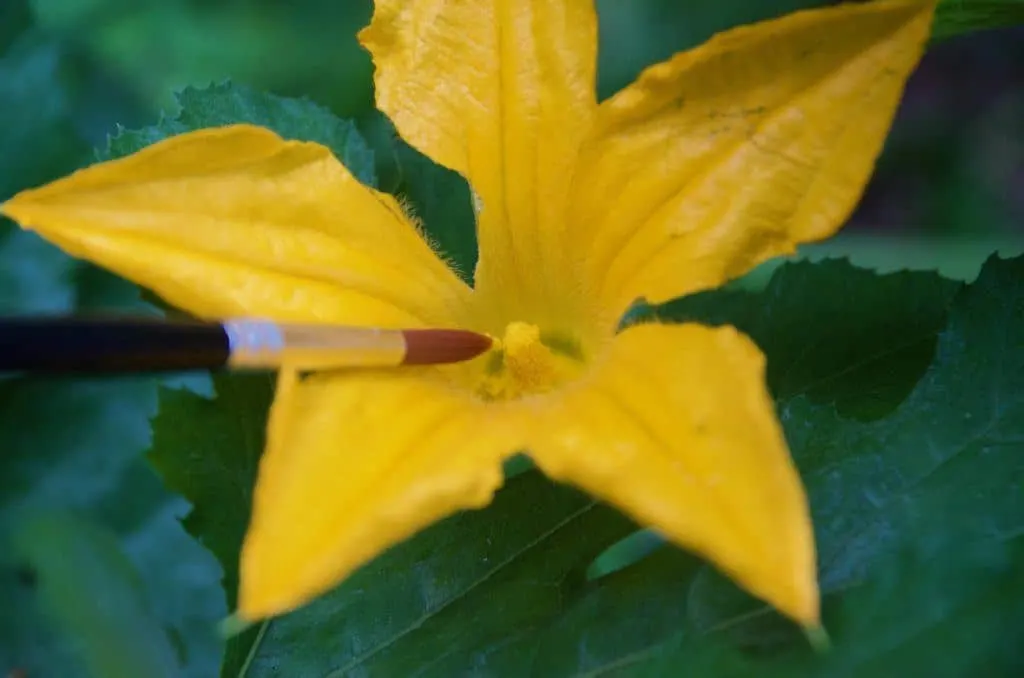
If you’ve ever tried to grow squash in your home garden and ended up with huge rambling plants but no fruit, this tutorial is for you!
How exactly do you know when it’s time to turn to hand pollination in your garden?
Well, it’s pretty clear that the birds and bees aren’t visiting your squash plants when they easily produce tons of blossoms but you’re getting zero squash!
Luckily, the solution is so simple and easy, absolutely anyone can do it, even all those of you with brown thumbs instead of green!
Unlike many crops that truly need insects or wind for pollination, squash like zucchini, pumpkins, and even their cousins the cucumbers can be easily pollinated by people, as long as you know what you’re doing!
Pollinating squash by hand is so easy you can do it in less than a minute!
Sexing the flowers
Did you know squash plants have both male and female flowers?
While many plants have flowers of different genders, squash are special because they’re super easy to identify!
There are two main ways to tell the gender of a squash flower, by looking inside at the center, and by looking at the stem right behind the flower.
Identifying by Stigma and Stamen
Male squash flowers have a stamen in the center. It looks like a small fuzzy banana or mushroom and is coated in pollen.
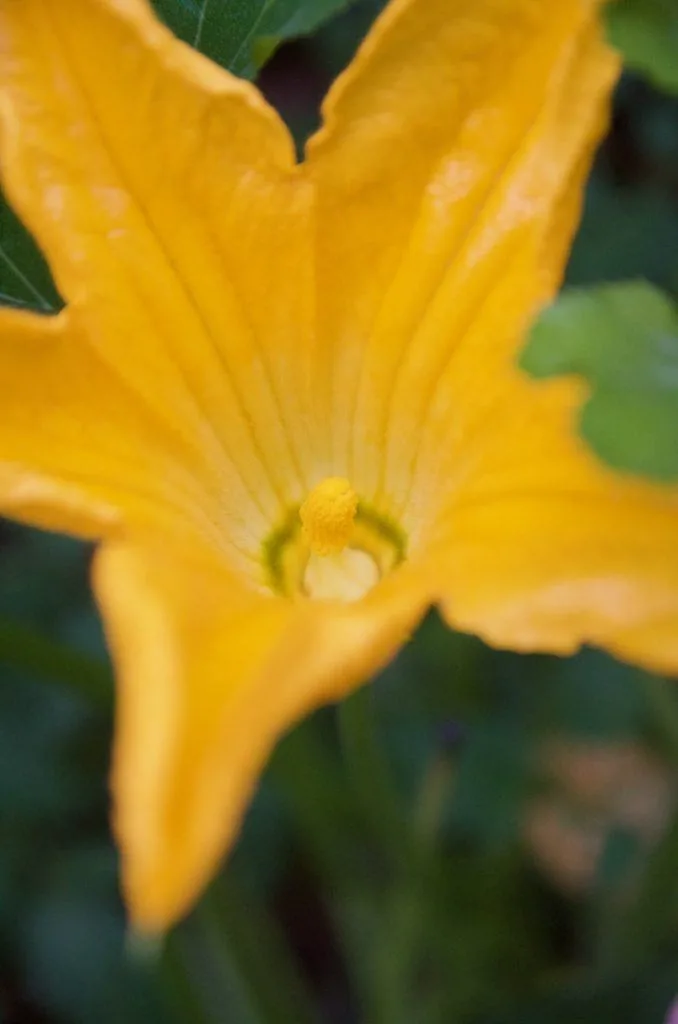
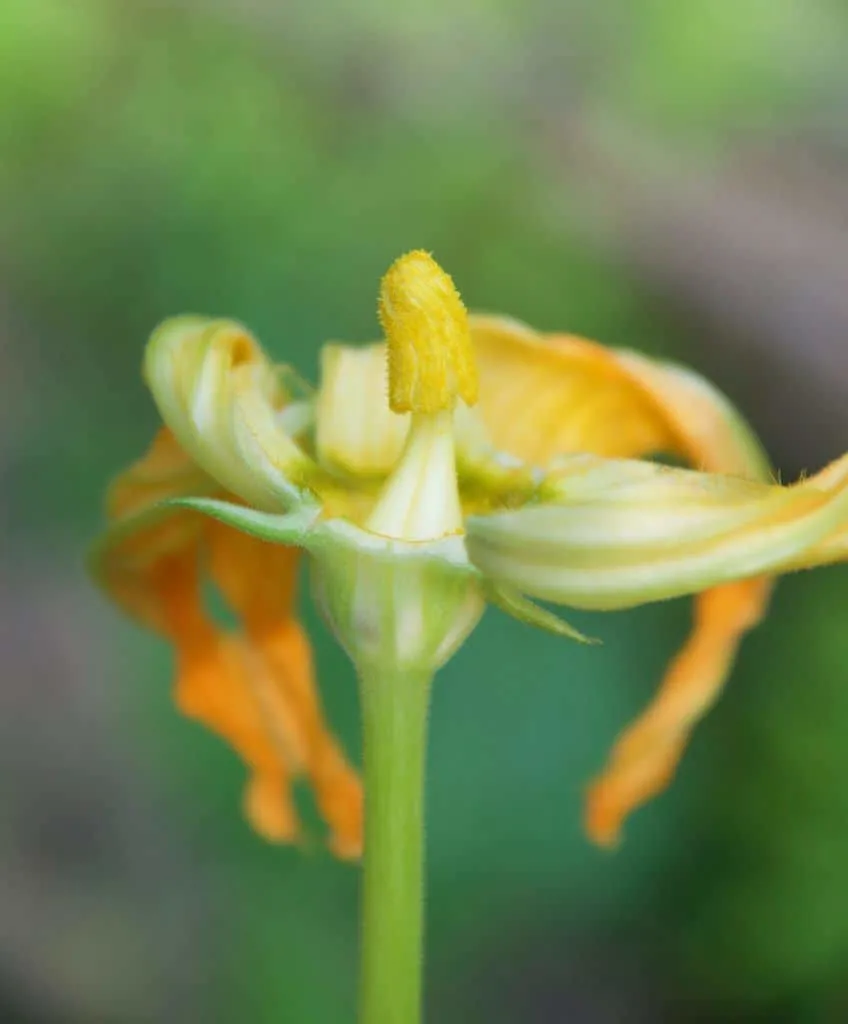
Female squash flowers have a stigma in the center. The stigma usually has between two and four distinct parts. It looks a little different depending on the squash plant, sometimes it looks a bit like a paddle, other times it looks like a tiny flower.
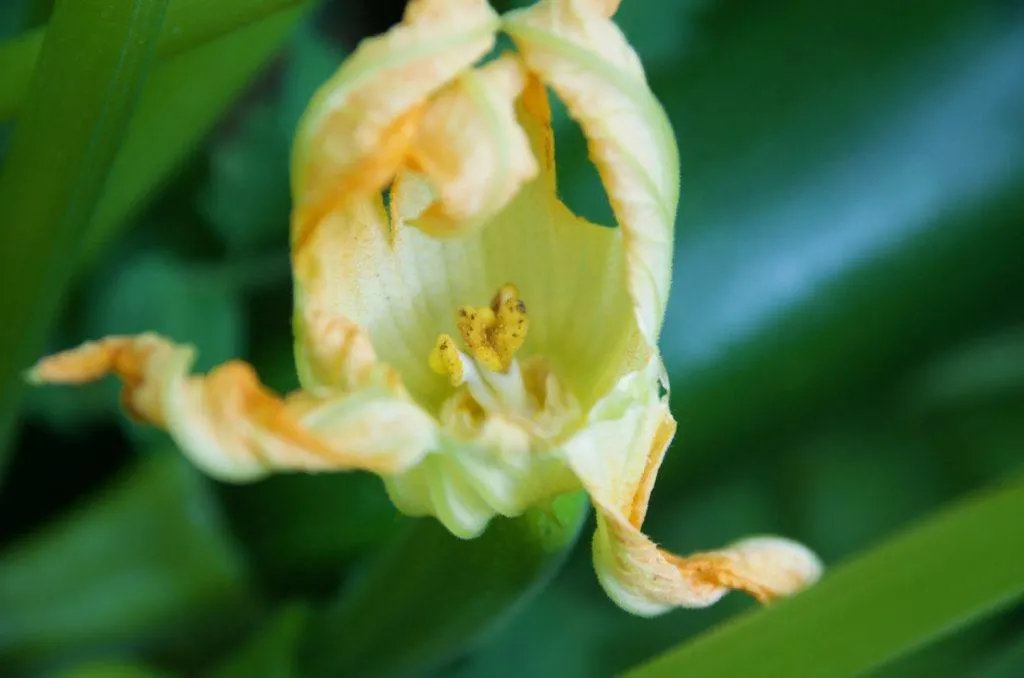
Identifying by the stem
If you have trouble identifying the squash flower’s gender by looking inside, you can usually have some luck by glancing at the stem.
Female Flower
The stem behind a female flower will have a bulbous growth that often looks like a miniature version of the squash, as that is indeed where the fruit will grow. This sometimes looks like a small ball on plants like pumpkin and acorn squash, whereas on zucchini it looks like a tiny zucchini.
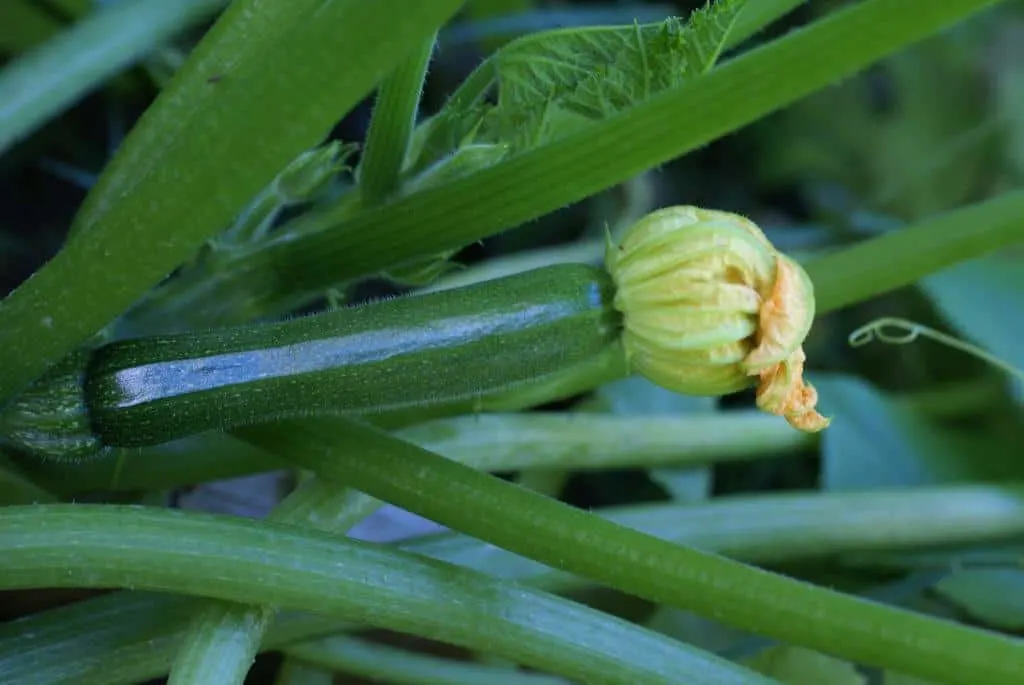
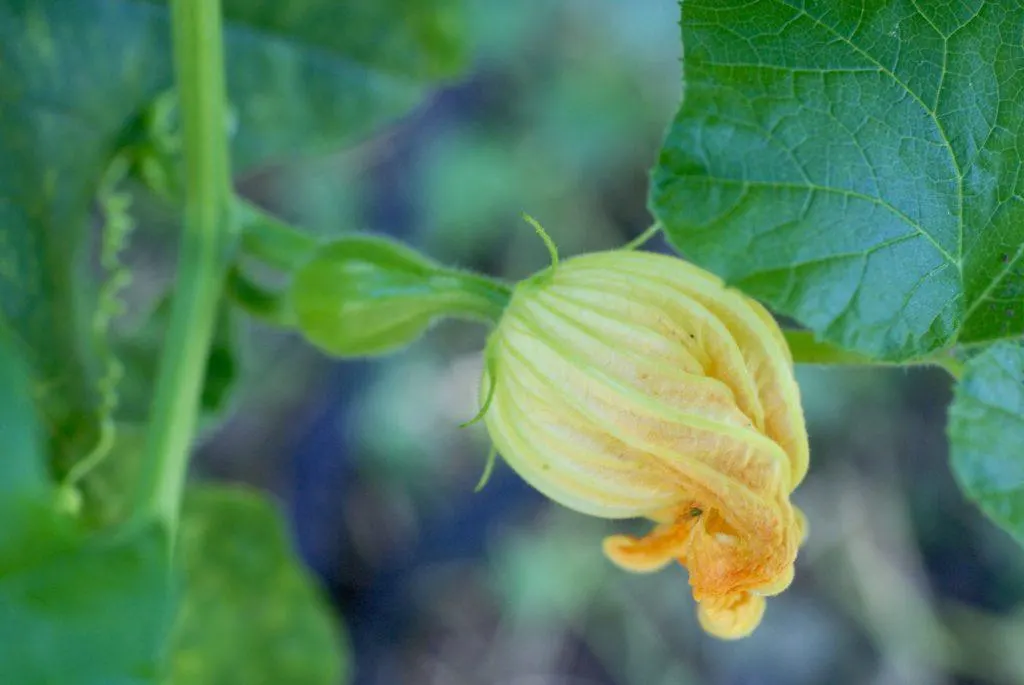
Male Flower
The stem behind a male flower will be lacking any sort of growth and will simply look like a flower stem.
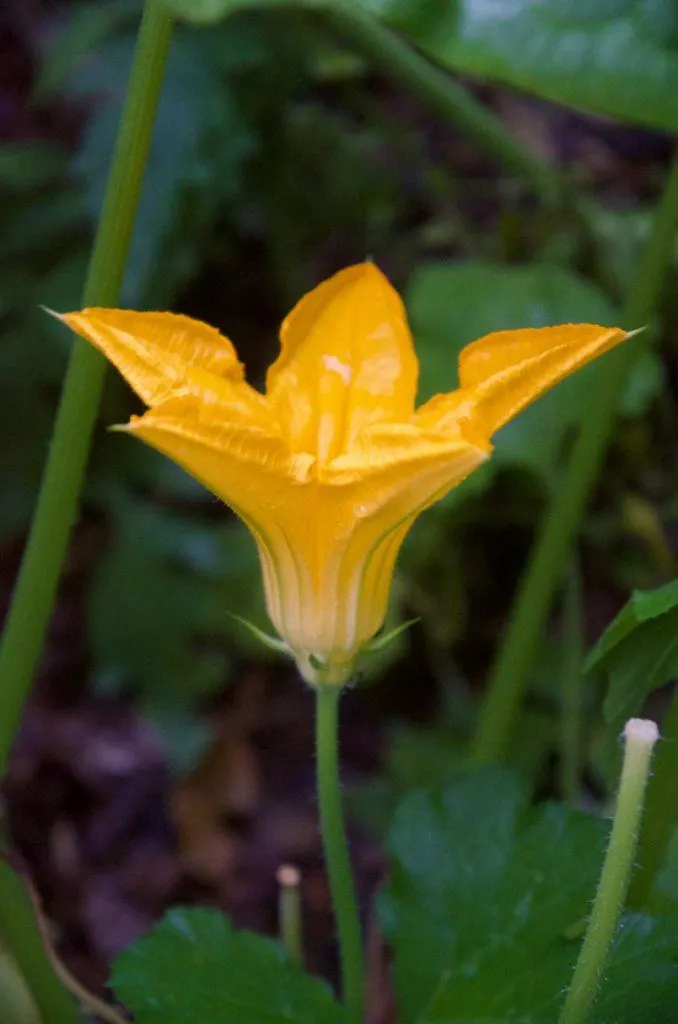
Transferring the pollen
The job of the birds and the bees in squash pollination is to transfer the pollen from the male flower’s stamen to the female flower’s stigma. This happens naturally when these creatures are gathering nectar from the flower.
When pollination isn’t happening naturally in your garden, it’s up to you to transfer that pollen!
There are lots of easy ways to transfer pollen from one flower to the other, the only important thing to remember is that the pollen needs to move from the male flower to the female flower, and not the other way around!
The best time to transfer pollen is during the bright daylight hours, when the flowers are naturally open. Squash flowers close in the evening, so don’t miss your chance!
One simple way to transfer pollen is to use something soft like a paintbrush or a q-tip to gather pollen from the stamen on the male flower.
To do this simply rub the brush all over the stamen until the brush is properly coated in pollen.
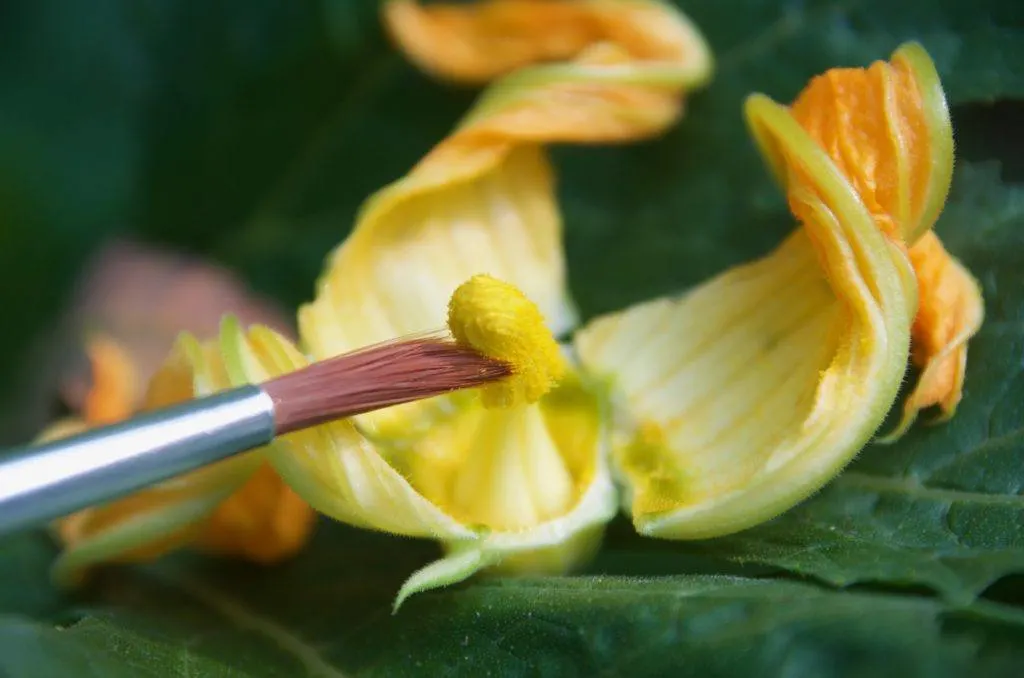

Use the same brush to carefully and gently brush the pollen onto the stigma of the female flower. Be sure not to damage any part of the female flower during this process, as it will need to still be functional so it can do its magic to make you some squash!
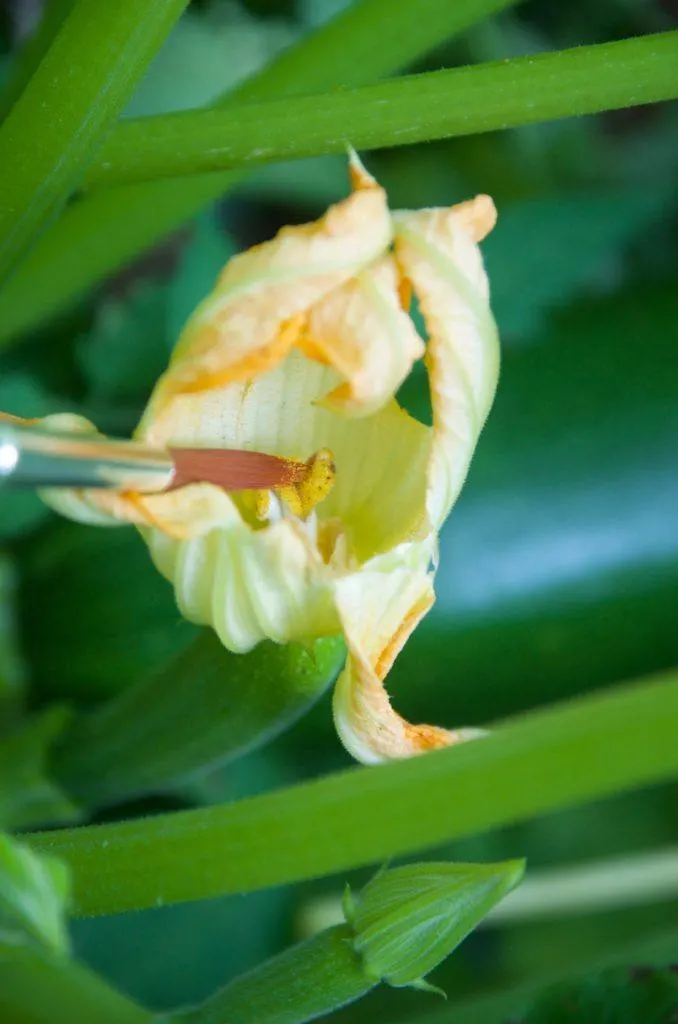
If you don’t have a paintbrush or q-tip handy, there is another way to hand pollinate squash. Simply peel back or remove the petals on the male flower and rub the stamen directly onto the stigma. Again, be gentle and don’t hurt the female flower!
Either method will work just as well!
You should repeat this step with every female flower every day so you’ll get as many squash from your plant as possible!
After you hand pollinate the female squash flower you can go back to letting nature take its course.
The flower will close up in the evening and remain closed for the next day or two. If you’ve succeeded in pollination, the flower will wilt and fall off, but the miniature squash will remain on the stem.
This tiny squash will swell in size until it’s ready for harvest, and you’ll finally be able to enjoy the fruits of your labor!
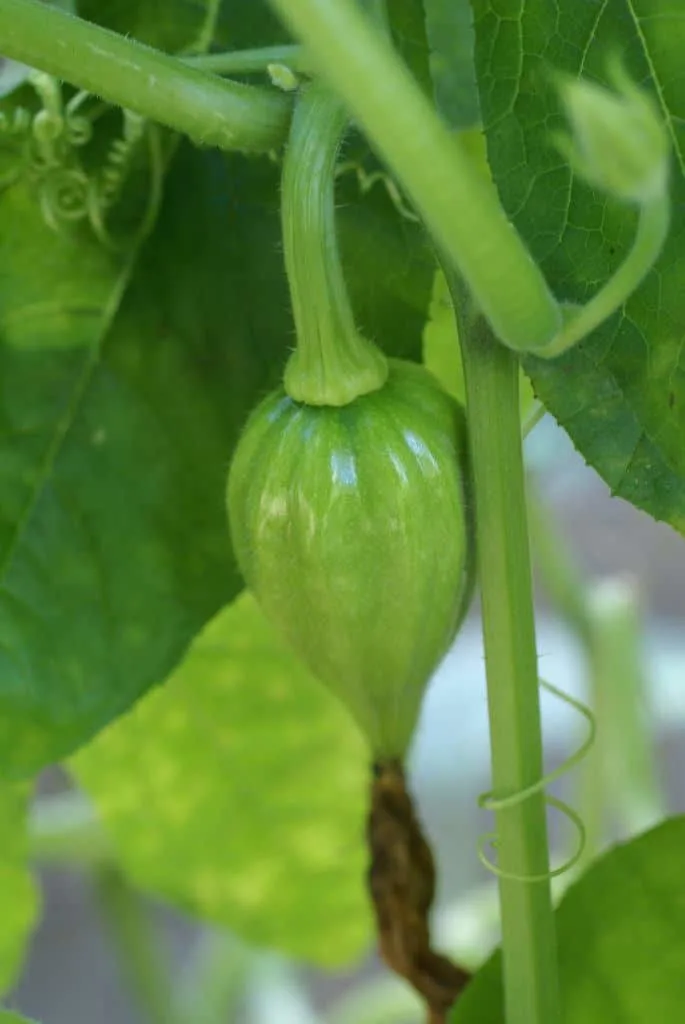
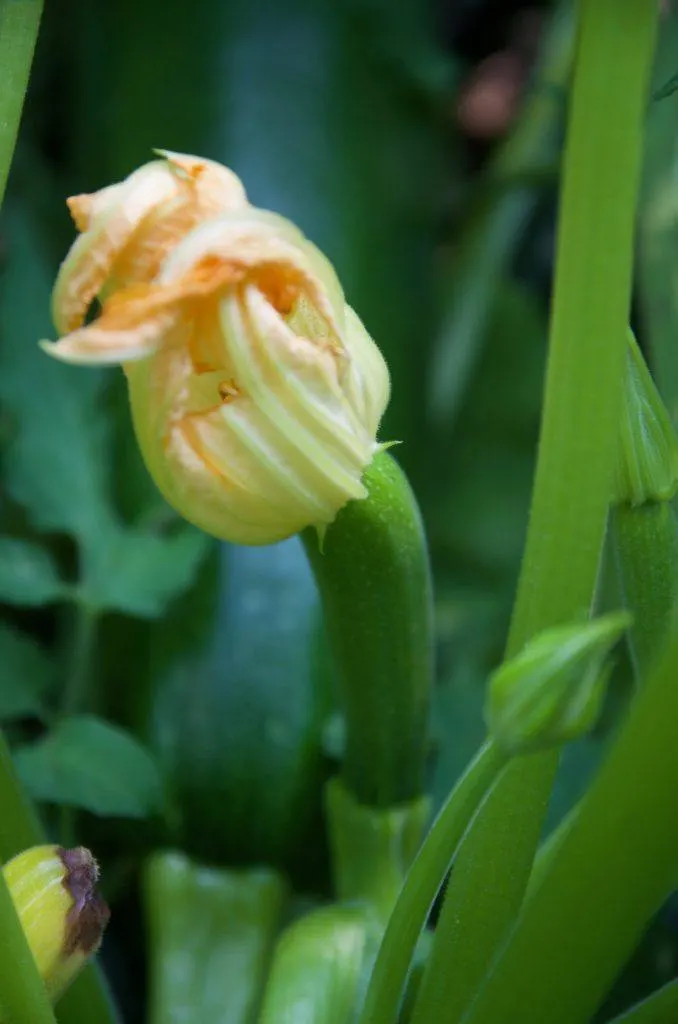
Pin This To Save For Later
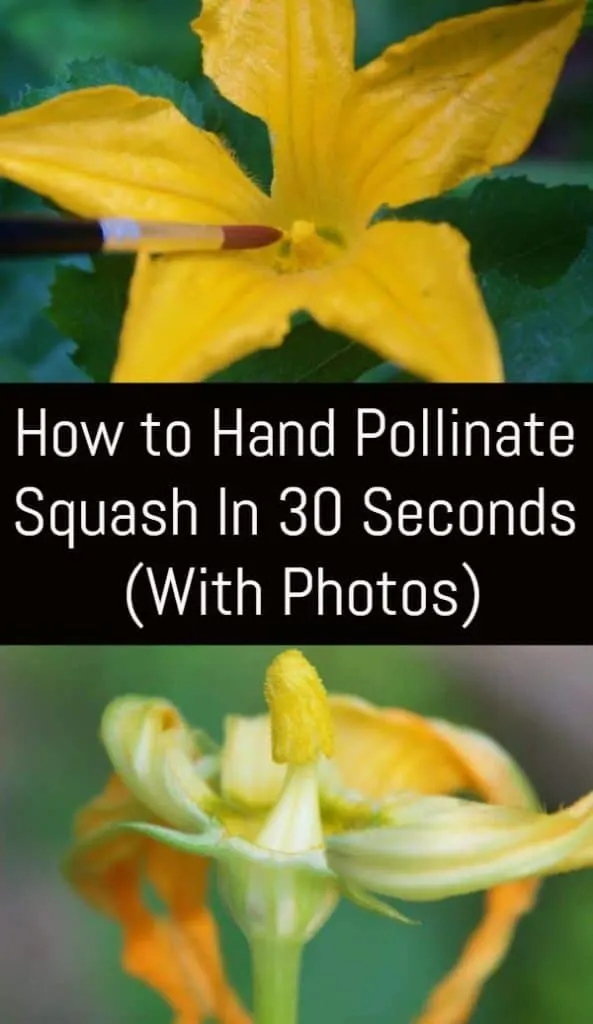
Read Next: 5 Reasons To Grow Nasturtiums + 10 Delicious Nasturtium Recipes

Get the famous Rural Sprout newsletter delivered to your inbox.
Including Sunday musings from our editor, Tracey, as well as “What’s Up Wednesday” our roundup of what’s in season and new article updates and alerts.


